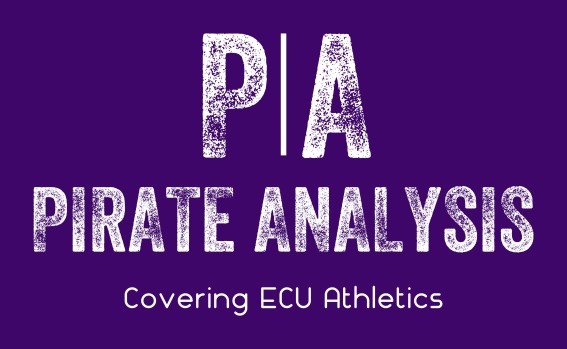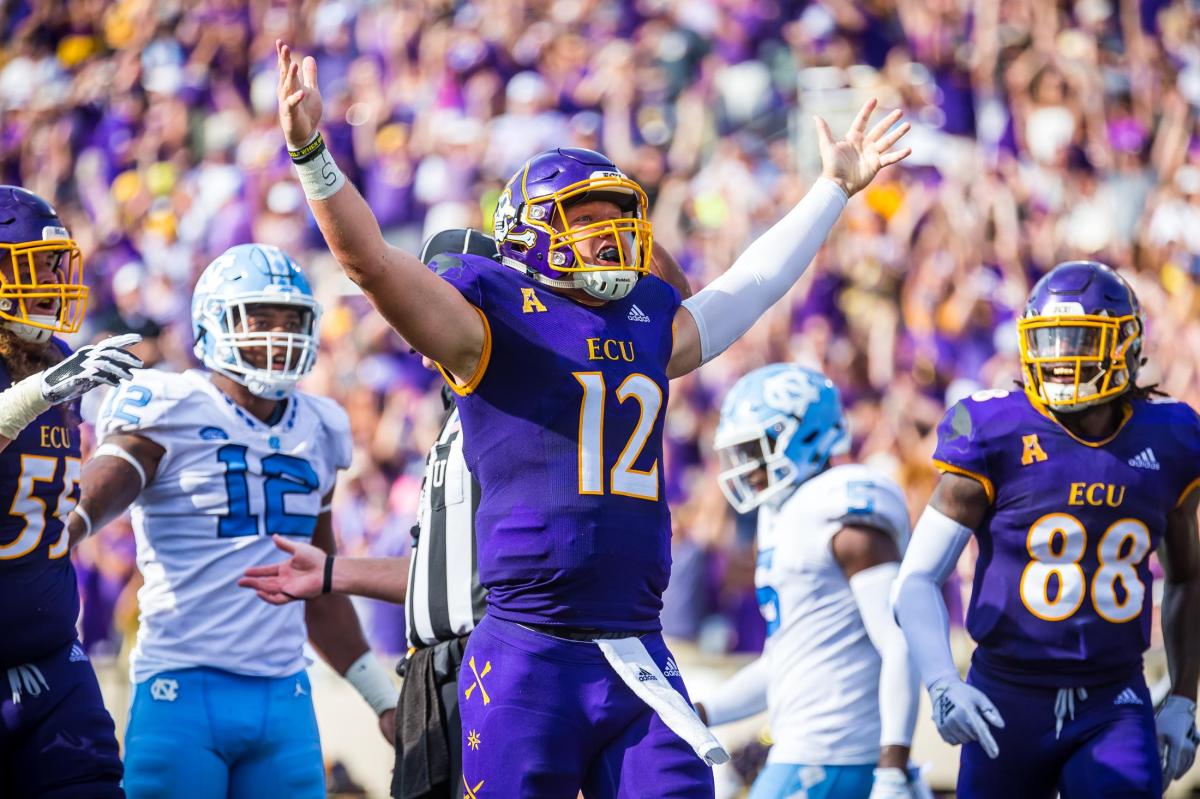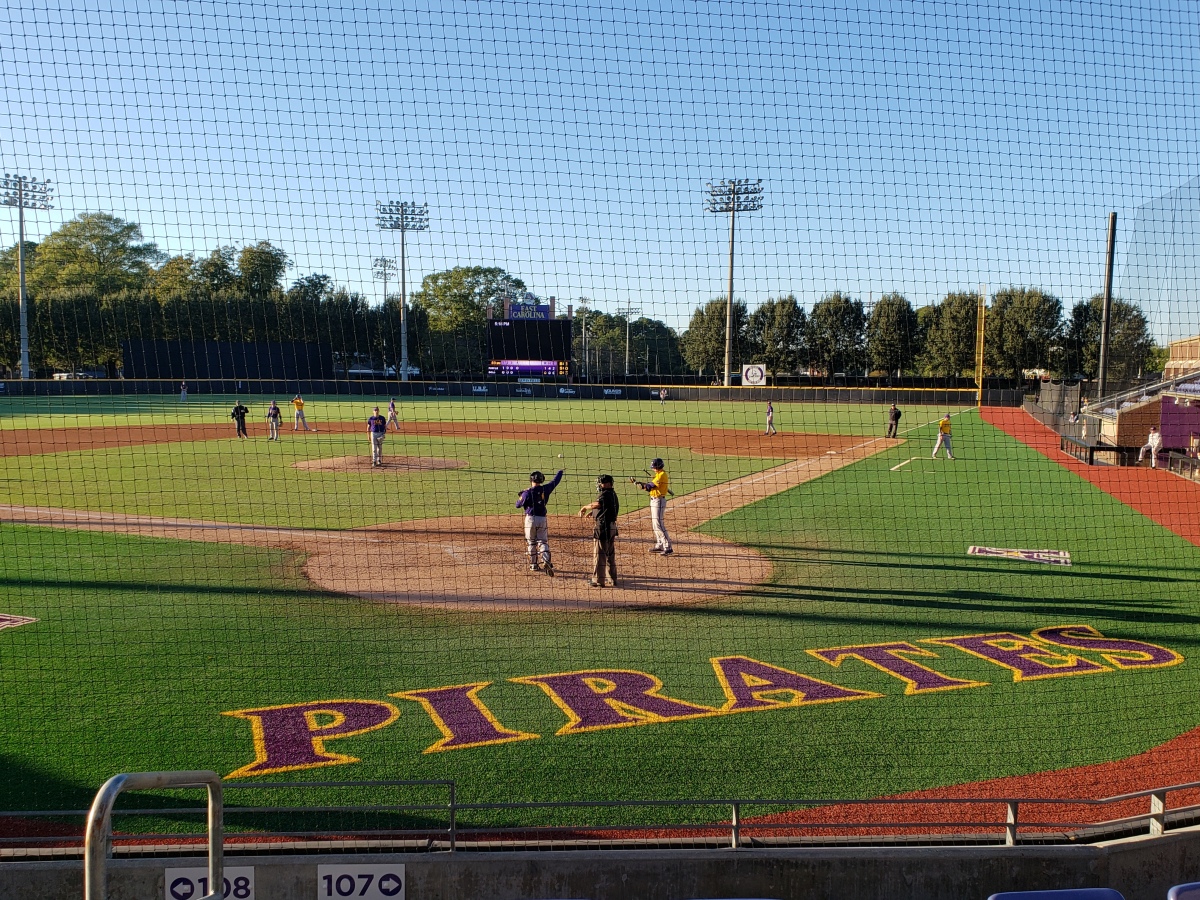The results were not there for quarterback Holton Ahlers and the East Carolina University football team in the second half of the 2019 campaign. That is not to say the Pirates failed to find their stride, because the offensive numbers suggest they should have won more than a single contest in their last six.
Two times the Pirates eclipsed 600 yards of offense, with each coming in the second half of the season and each resulting in a loss.
“With the exception of the last game…I did feel like there was a point in there where the players started to understand the offense a little bit better,” ECU’s Offensive Coordinator/Quarterbacks coach Donnie Kirkpatrick told Patrick Johnson on 94.3 The Game on Friday. “We started way too slow, obviously, but we did kick into gear.”
A driving force behind that was Ahlers, a then-sophomore signal-caller. In the aforementioned 600-yard games, Ahlers tossed for a combined 1,033 yards and 10 touchdowns, displaying the talent that resides in his left arm.
“We threw the ball, I thought, the second half of the year and then overall for the year — our throwing game really started to flourish a little bit,” Kirkpatrick said. “Holton, I thought, really started to kick into gear. C.J., as he got a little bit of experience, he took off and Tyler Snead is just fantastic.”
Ahlers’ top-three receivers in Snead, (C.J.) Johnson and Blake Proehl are all slated to return in 2020, cementing the Pirates as one of the nation’s top teams in terms of returning production.
With an increased amount of confidence, according to Kirkpatrick, after ripping opposing defenses, the returning Pirates on the offensive side of the ball will move to Year Two under his scheme as Holton takes that crucial step from sophomore to junior.
“I think he really has the offense down now,” Kirkpatrick said of Ahlers. “It takes a year or so — learning new words — it’s a whole new language. It’s a whole new way of somebody wanting you to do things. There were some things going in after spring ball that he worked hard on in the summer. I think he improved on some of those. There were some backslides once you get into the games and then eventually about mid-season, I think he really, really started to understand what we were trying to do.”
While Ahlers’ work ethic is nearly unrivaled according to Kirkpatrick, it was not until veteran back-up quarterback Reid Herring entered the transfer portal in mid-September that Holton began stepping up in earnest.
“Losing Reid Herring was a blow to us from the coaching staff because you always know that you’re one snap from the other guy having to play, so you’ve got to have depth,” Kirkpatrick said.
“One thing is — it’s the old thing everybody has always talked about — when you do kind of have two quarterbacks on the team, it’s a little bit hard for one of them to be totally in charge of the team. I do think after Reid decided to go into the portal…it did kind of give Holton the reins and I think they all turned and realized, ‘well the future is Holton’, and it made him play better and it made the guys around him play better.”
Just three games after Herring departed the team, Ahlers tossed his first 300-yard game of the season. Of course, Herring’s transfer was far from the only factor in Ahlers’ production seemingly ticking up.
Kirkpatrick said the Pirates also began leaving more players in to protect their quarterback, limiting the amount of hits he took and allowing him more time to throw the football.
“As the year went on, we did eliminate as many hits on him as we could,” Kirkpatrick said. “Now, when you’re in the pocket, it’s the most dangerous place anyhow. We did some things protection-wise after that, that I think in the end actually made us better. It gave him a little more time to throw the ball and that’s one reason he threw it better. He was able to stand on two feet and throw it a little bit more in the second part of the season.”
With another off-season to study the playbook and process what his offensive coordinator and head coach want from him, Ahlers has an opportunity to catapult himself into the discussion for best quarterback in the American Athletic Conference. The last four games of 2019 showcased his ability and made Pirate fans believe ECU can play with any team in the country.
“There’s not a harder working young man in the country than Holton Ahlers,” Kirkpatrick said. “That’s one that I do feel good about, when I lay my head down each night, that’s one thing I feel good about because I know Holton is putting everything into it each day…I’m anticipating him coming out and just being absolutely lights out this year. I know he is a confident young man and he believes in himself and the reason he believes in himself is he knows he’s put the work in.”
COVID-19 has muddied the preseason and interrupted what would have been a critical spring for Ahlers and the Pirates. Nevertheless, Kirkpatrick said his quarterback has been sending him videos of workouts and following, to the best of his ability, an offseason diet plan.
“We’ve asked him not to necessarily lose weight, but to trim up a little bit and maybe become even a little bit more explosive, just so that first step — when he steps up or he avoids the rush or he steps up underneath a guy coming around the corner — that he’ll be just a little bit quicker,” Kirkpatrick said.”
A leaner, more explosive version of Ahlers with another year of experience under his belt could be a tough combination for opposing defenses to defend whenever the college football season returns this fall.
Listen to Donnie Kirkpatrick’s full comments about Holton Ahlers and other topics with Patrick Johnson on 94.3 The Game that first aired on Friday below:








